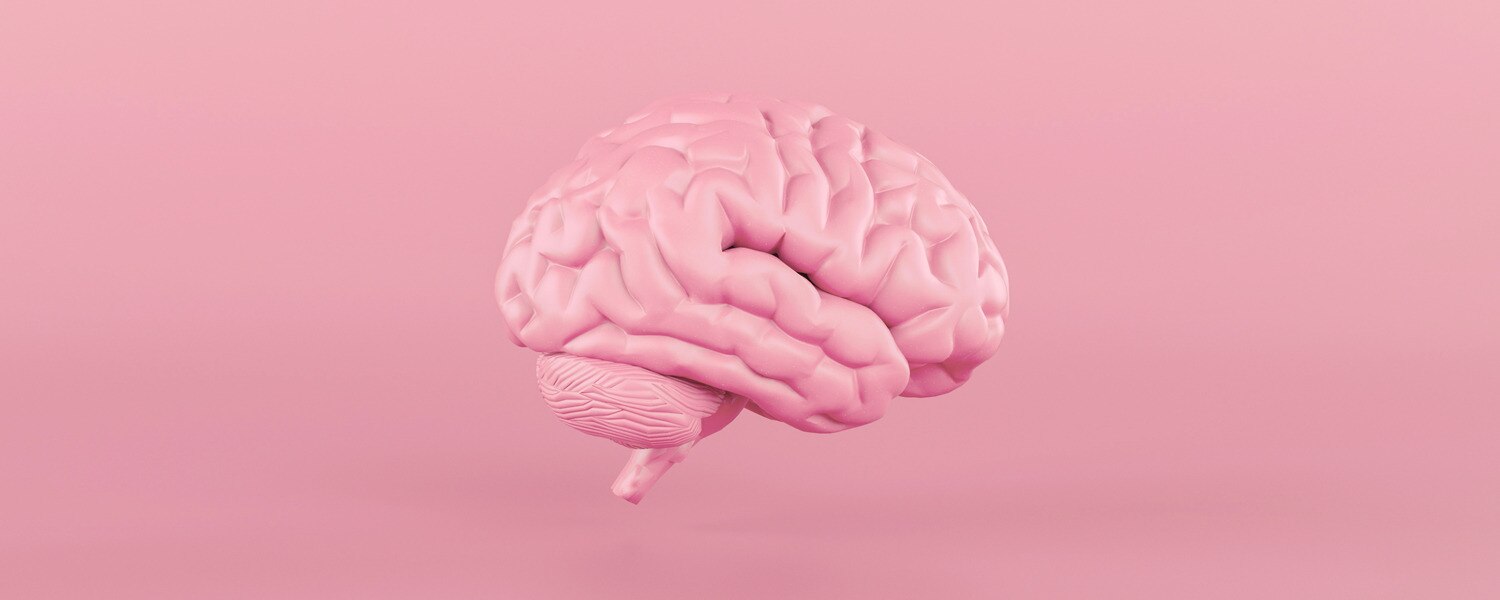How the Menstrual Cycle May Affect Your Brain

Saba® - Freedom to feel comfortable.
Did you know the emotional roller coaster your menstrual cycle takes you on can reshape your brain? Let's talk about it!
What happens in your brain during your menstrual cycle is not necessarily all known yet. Here’s what we do know:
Thanks to studies performed on animals, we know that mammals have demonstrated that certain brain regions can change in response to the production of estrogen — a hormone vital for sexual and reproductive development in females.
Meanwhile, in humans, MRI scans conducted on women's brains show that the fluctuation in the production of sex hormones - estrogen and progesterone - throughout the menstrual cycle can alter areas of the brain responsible for emotions, memory, behavior, and the transfer of information.
Let’s find out why!
The Monthly Hormonal Cycle
The menstrual cycle, which repeats every 25 to 30 days, begins with shedding the uterus's lining (known as your period). A woman’s sex hormone levels are lowest during this time, then start to rise as the menstrual cycle progresses. This rise signals the lining of the uterus to begin growing again (follicular phase).
Then, estrogen levels fall to release an egg, marking the midpoint of your menstrual cycle (ovulation). Following this, there is a surge in both progesterone and estrogen to prepare for potential fertilization. In the absence of pregnancy, declining hormone levels initiate menstrual bleeding.
Read more on: How Do Hormones Affect You?
In addition to this hormonal rollercoaster ride, women also have hormones that have a daily cycle - testosterone and cortisol rise before dawn and diminish in the evening. These daily rhythms are observed in both men and women.
The Human Brain
The brain is made up of a dense mass of cells called neurons. These neurons are protected by gray and white matter in the outer layer of the brain tissue. Gray matter contains the neurons and their branches, called dendrites, while white matter packs together the roots or axons of the neurons.
Gray matter regulates emotion, learning, and memory, while white matter exists deeper in the brain tissue to exchange information between neurons that connect different parts of gray matter.
The hippocampus is the brain's cognitive center, holding gray and white matter. It is located deep within the brain, behind the ears, in an area richly populated with receptors for sex hormones.
The hippocampus is the region of the human brain that is most responsive to changes when developing a new skill, studying, etc. A shrinking hippocampus is an indicator of dementia, especially Alzheimer’s disease.
Estrogen's Impact on Brain Regions
Now that we know the functions of estrogen and the regions of the brain, how does estrogen affect these brain regions?
In 1990, a researcher named Catherine Wolley made a groundbreaking discovery, revealing that the hippocampus responds to estrogen. She discovered that estrogen regulates dendritic spine density in the hippocampus. Following Wolley’s findings, scientists learned that menopause decreases the volume of gray matter in some regions of the brain. This led scientists to want to know if adult human brains change every month based on the rise and fall of sex hormones.
Another scientist, Emily Jacobs, analyzed 30 brain scans taken daily from a single woman and revealed that sex hormones play a role in reshaping the hippocampus and reorganizing the brain's connections.
The Menstrual Cycle Causes The Thickness of Brain Regions To Fluctuate
In a study conducted by Julia Sacher and her team, an ultrasound was utilized to precisely identify the moment of ovulation in 27 female participants. Blood samples were gathered from these volunteers at six specific intervals corresponding to ovulation, allowing for the analysis of hormone levels. Additionally, ultrahigh-field MRIs were utilized to scan the brains of the 27 women at six designated points in the study.
Using a more potent MRI than typically found in clinics, Sacher's team captured images of the live brain with incredible resolution.
This level of detail was previously achievable only through the direct slicing of the brain during postmortem examinations. Incredible!
Even though the hippocampus is a small structure in the brain, the Sacher team observed a series of changes in different hippocampus regions that synced with the menstrual cycle. When estrogen rises and progesterone falls, the outer layer of the hippocampus thickens, and the gray matter expands. Similarly, when progesterone levels increase, the layer related to memory also expands.
Other research by neuroscientist Elizabeth Rizor and her team, which has yet to be peer-reviewed, found that not only is gray matter's thickness affected, but also white matter's structural features fluctuate in response to hormonal cues.
Their study indicated that hormonal fluctuations before ovulation may lead to changes in white matter, improving information transfer across different brain regions.
However, observed changes in the thickness of brain regions in these studies have not been associated with specific brain functions.
A Quick Recap
Multiple studies demonstrate that specific brain regions can change with hormonal fluctuations during the menstrual cycle. However, they don't clarify whether thickness changes are connected to emotional and cognitive symptoms during this period.
Scientists emphasize that these findings do not reflect how memory or cognition is impacted since the research focused on only healthy women without reported symptoms.
Women are a significant percentage of Alzheimer's and depression cases, yet brain-imaging research related to women is disproportionately low. This gap persists even in drug approvals, highlighting the importance of prioritizing women's brain health in research and healthcare.
So, what do all these findings leave us with?
There is a crucial need for more research into women's unique neuroscience, especially to study structural brain changes associated with hormonal fluctuations.
It's time to prioritize the brain as a key aspect of women's health!
DISCLAIMER: The information provided in this article is sourced from a National Geographic premium article. We encourage readers to refer to the original Nat Geo article for further in-depth understanding: